Ramona Clematis – 1 Gallon Pot
$49.97 Original price was: $49.97.$34.98Current price is: $34.98.
SKU: D2LSC 0880289955 Categories: Clematis Vines, VINES & CLIMBERS
- Experience the difference quality makes.
- Buy with Peace of Mind
- Free Shipping, No Compromise on Quality
- High quality products, hassle-free returns.

Ramona Clematis
Clematis ‘Ramona’
Other Names: Hybrida Sieboldii
Plant Details
USDA Plant Hardiness Zones: 4a-9b Find Your Zone
Plant Type: Flowering Vine
Height or Length at Maturity: 8-12′
Width at Maturity: 3-6′
Spacing: 3-4′ apart to cover fences and walls
Spacing: 3-4′ apart to cover fences and walls
Growth Habit / Form: Climbing, Dense, Twining, Twisted Branching
Growth Rate: Moderate to Fast
Flower Color: Lavender-Blue shades with Red Anthers
Flower Type: Single (Imbricate)
Flower Size: 5-7″
Flowering Period: Late Spring to Early Fall
Flowering Period: Late Spring to Early Fall
Fragrant Flowers: No
Foliage Color: Green
Fragrant Foliage: No
Sun Needs: Full to Mostly Sun, Morning Sun with Afternoon Shade, Morning Shade with Afternoon Sun, All Day Lightly Filtered Sun
Water Needs: Average
Soil Type: Clay (Amend heavy clay soil to ensure good drainage), Loam, Sandy, Silt
Soil Drainage: Moist but Well Drained
Soil pH: 5.5-6.0
Maintenance / Care: Low
Pruning Group: 2
Attracts: Butterflies, Hummingbirds, Beneficial Pollinators, Visual Attention
Resistances: Cold Temperatures (-30F), Deer – more info, Disease, Heat, Humidity, Insect, Black Walnut, Rabbit
Description
If you’re into older tried-and-true varieties with stunning beauty and amazing flower power, Ramona Clematis, originally called Hybrida Sieboldii when introduced in 1874, has stood the test of time and remained as popular as ever for many good reasons. Exceptionally vigorous, the entire vine can be smothered in very large, 6 to 8 inch flowers in late spring to early summer reblooming nicely until the end of summer or early fall. The flowers open in soothing shades of lavender gradually turning to shades of blue while retaining a soft-lavender bar down the center of each petal. The petals surround a cluster of contrasting red anthers for a truly unique and beautiful color combination. The vines are clad with bipinnate to pinnate-compound dark green leaves that do a great job showing off the blooms. At 8 to 12 feet tall and 3 to 6 feet wide, Ramona is a fine selection for growing on arches, fences, trellises, pergolas and other structures its vines can twine around.
Landscape & Garden Uses
Climbing up to 8 to 12 feet high and spreading 3 to 6 feet wide, the Ramona Clematis is ideal for growing on trellises, tall obelisks, fences, pergolas, arches and any other structures its vines can twine around. A fine addition to Clematis gardens, blue theme gardens, butterfly gardens, Asian gardens, Zen gardens and cottage gardens.
Suggested Spacing: 3 to 4 feet apart to cover fences, trellises, and walls
Growing Preferences
Ramona Clematis is easy to grow in a moist but well-drained soil of average fertility and full sun to part shade. We suggest at least 4 hours of direct sunlight per day. Though it tolerates dry periods when established, it will appreciate an occasional watering in prolonged periods of dry weather. Make sure not to plant this one too deep as it tends to smother the plant.
Clematis Pruning Group 2
Clematis in Group 2 consist of all the early, large-flowered hybrid clematis that bloom in late spring or early summer and maybe again in late summer. Clematis in this group should be pruned lightly in late winter or early spring. Pruning consists of removing weak and crossing shoots then thinning down the plant to a structure of evenly spaced one and two year old stems. Cut each stem just above a pair of healthy buds. Plants in this group have the tendency to become bare at the base as they mature. You can under-plant with small shrubs or perennials to help conceal the bare stems. Alternatively, you can often force a flush of new growth from the base by cutting the vine back to 18 inches immediately after the flush of bloom.
Note: To delay the heavy flowering until later in summer you can use the Pruning Group 3 method. In February or March, cut each stem to a height of 1 feet or so. Always make sure to leave two good buds below where you make your cut. New growth will emerge from these buds to produce the current seasons vines and blooms.
Helpful Articles
Click on the link below to find helpful advice from our experts on how to plant and care for Clematis vines
How To Plant A Clematis
How To Prune A Clematis
Plant Long & Prosper!
Questions? Contact Us!
Be the first to review “Ramona Clematis – 1 Gallon Pot” Cancel reply
Related products
Sale!
Clematis Vines
Sale!
Clematis Vines
Sale!
Clematis Vines
Sale!
Clematis Vines
Sale!
Clematis Vines
Sale!
Clematis Vines
Sale!
VINES & CLIMBERS
Sale!
Clematis Vines



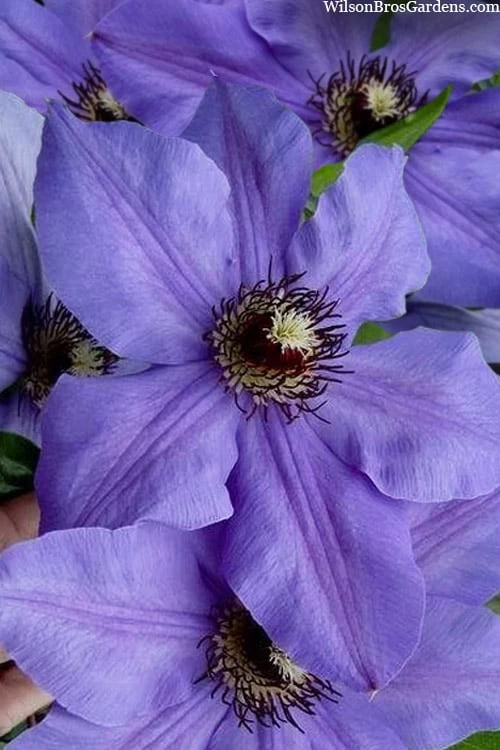



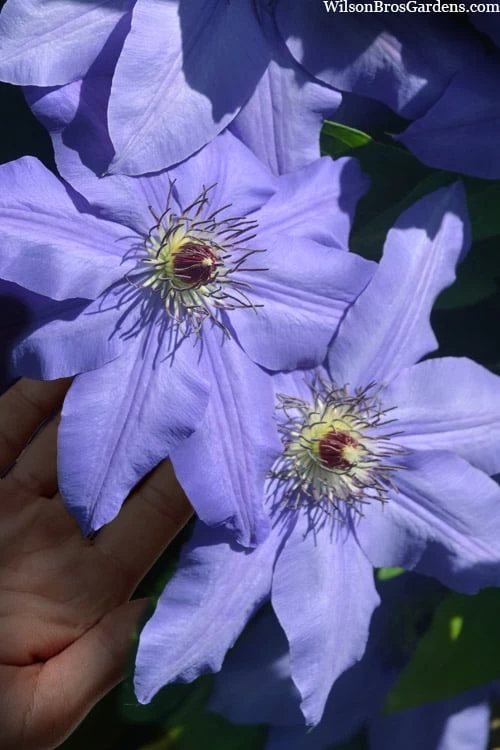

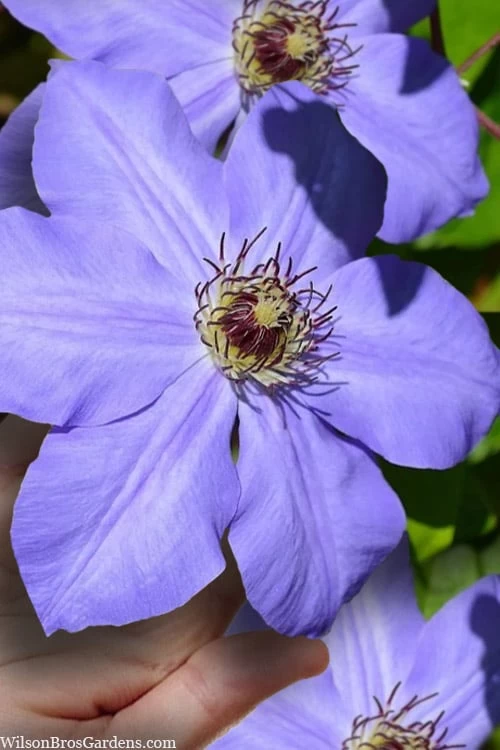




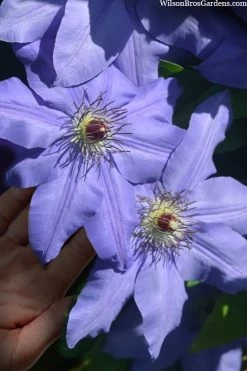
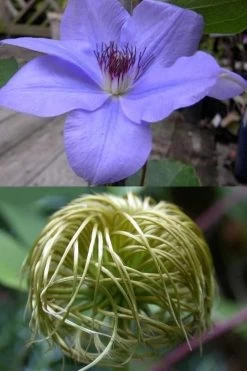

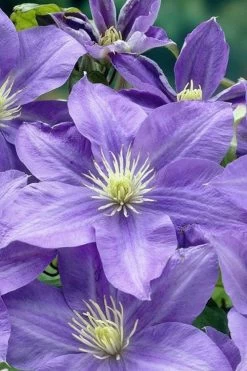

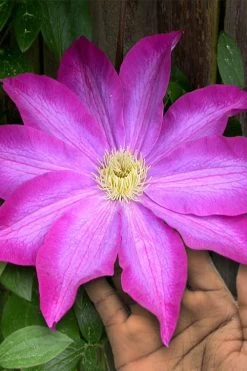

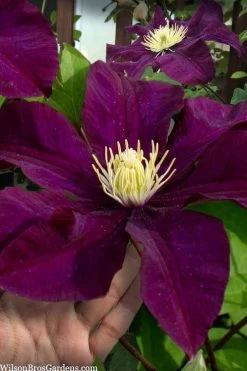
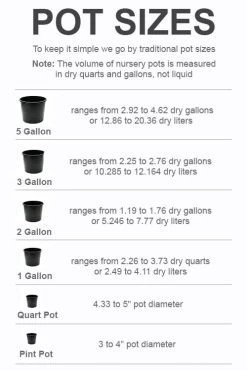
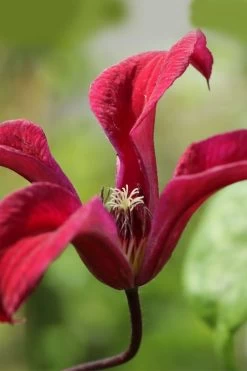

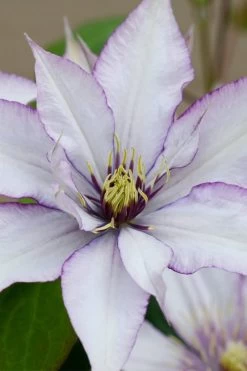

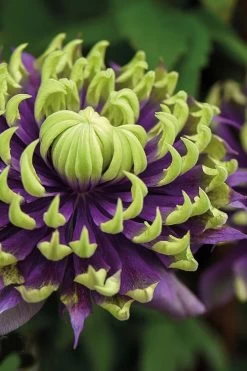

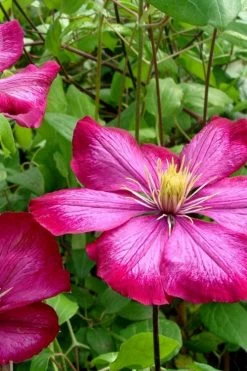
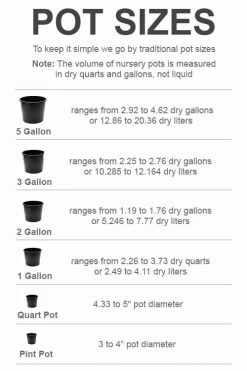
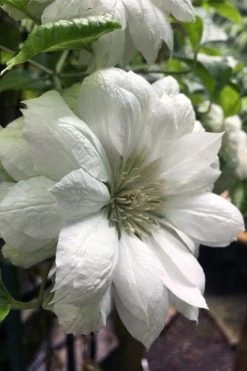
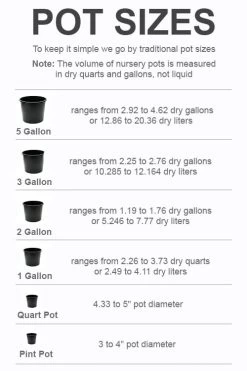
Reviews
There are no reviews yet.